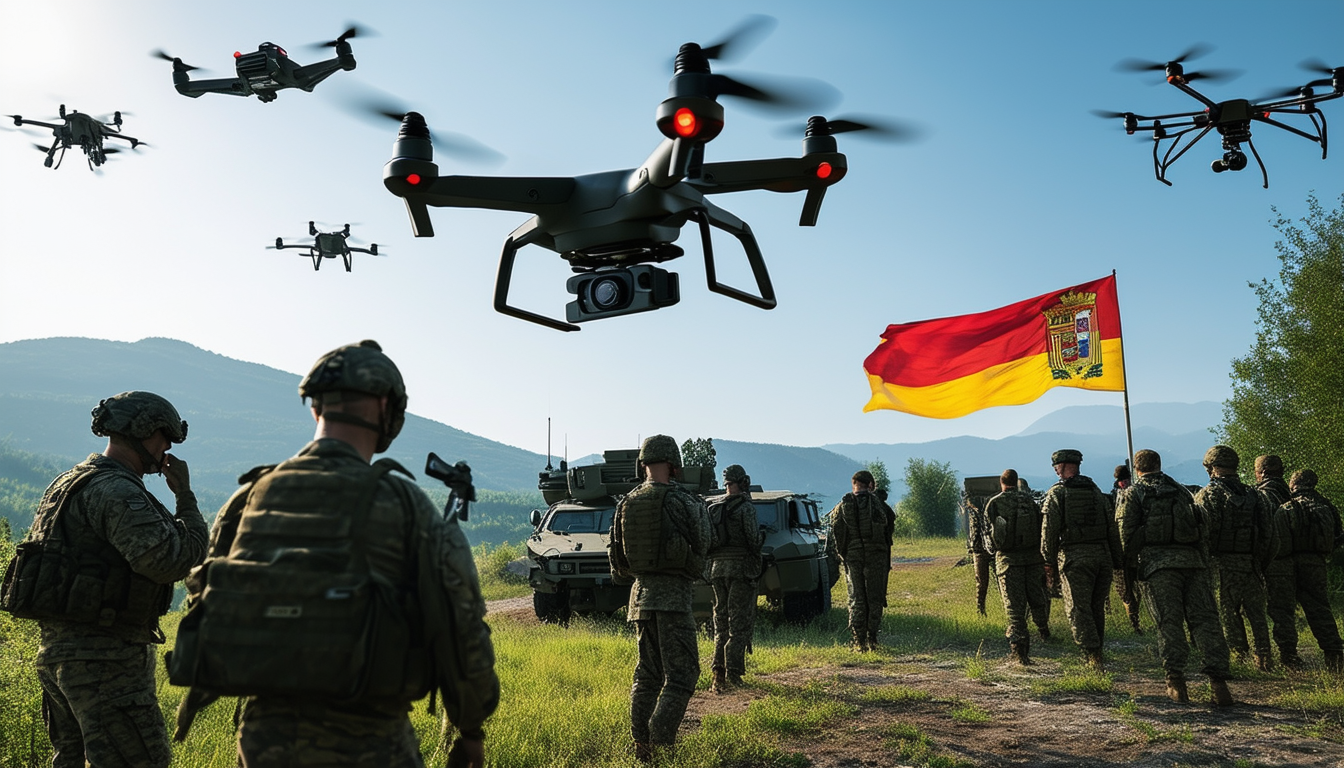In a context of growing international tensions, theNATO recently decided to test its new doctrine for fighting drones in Romania. This exercise, which focused intensely on defense against class 1 drones, saw the testing of technologies interference and detection systems in real conditions. More than 70 systems have been analyzed, ranging from sensors to interception devices, with the aim of strengthening the resilience of armed forces in the face of growing air threats.

Against a backdrop of growing tensions and new threats, NATO has recently tested its anti-drone guide during significant exercises in Romania. These tests, which involved a series of technologies interference and detection, aim to refine military strategies in the face of drone threats, which have become omnipresent on the modern battlefield. The main objective is to assess the capacity of the armed forces to face possible attacks based on drones, particularly those of class 1, which represent an increasing threat to security and aerial surveillance.
Table des matières
ToggleAn innovative approach to an evolving threat
The exercises conducted in Romania allowed NATO to test more than 70 systems and technologies, including sensors, of the effectors and jammers. These devices have been deemed essential to counter the growing threat posed by drones, particularly those that could be used for espionage or targeted attacks. In this context, the armies were able to observe in real time the effectiveness of these technologies in a simulated environment, but reflecting the real conditions of a current conflict.
Exercises in cooperation with allied forces
These tests were not carried out in isolation. More than 19 nations NATO members participated in the exercise, strengthening military cooperation between allied forces. This collaboration is crucial for developing common defense protocols in the face of various threats, notably those emanating from the East, in particular incursions by drones identified as being of Russian manufacture. This demonstrates NATO’s desire to work together to secure the airspaces of member countries against any form of provocation.
The challenges posed by the use of drones in modern conflicts
Recent events have highlighted the challenges associated with the use of drones in contemporary conflicts. In real-world scenarios, drones can inflict considerable damage while adopting tactics of sneak attack (sneak attack). These challenges require advanced detection systems that can identify potential threats before they cause damage. The tests carried out by NATO therefore have as their core mission the evaluation of the speed and effectiveness of the identification of a suspicious drone, thus meeting an imperative security need.
Preparing for the future: the importance of the Ramstein exercise
This first exercise, known as Ramstein, is a crucial step for NATO in its quest to adapt to an ever-changing defense landscape. The ability to integrate anti-drone systems into pre-established military scenarios is essential to anticipate and neutralize future threats. The lessons learned from this exercise will make it possible to refine the strategies deployed by the armies, thus increasing their resilience in the face of potential attacks on European territory.
Towards a coordinated response to air threats
With tensions rising in the region, especially regarding the increased use of drones by non-state and state forces, the growing need for a coordinated response is becoming evident. NATO’s efforts to perfect its anti-drone procedures through practical exercises are not only a necessity, but also a strategic imperative. By joining forces, allied nations strengthen their collective defense, ensuring that air threats are effectively countered, regardless of the type of enemy encountered.




















